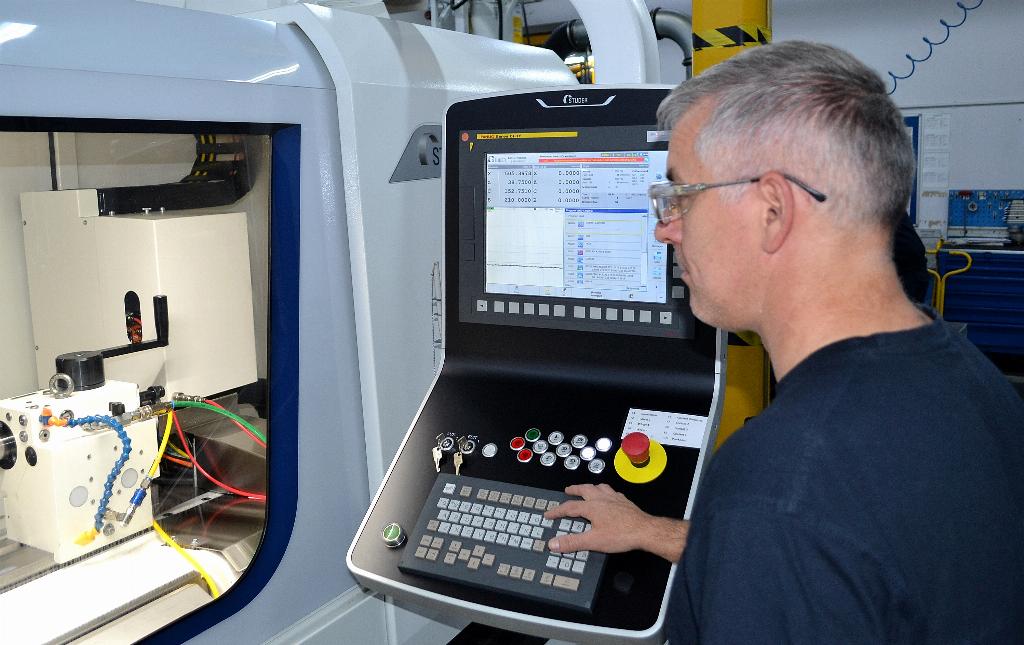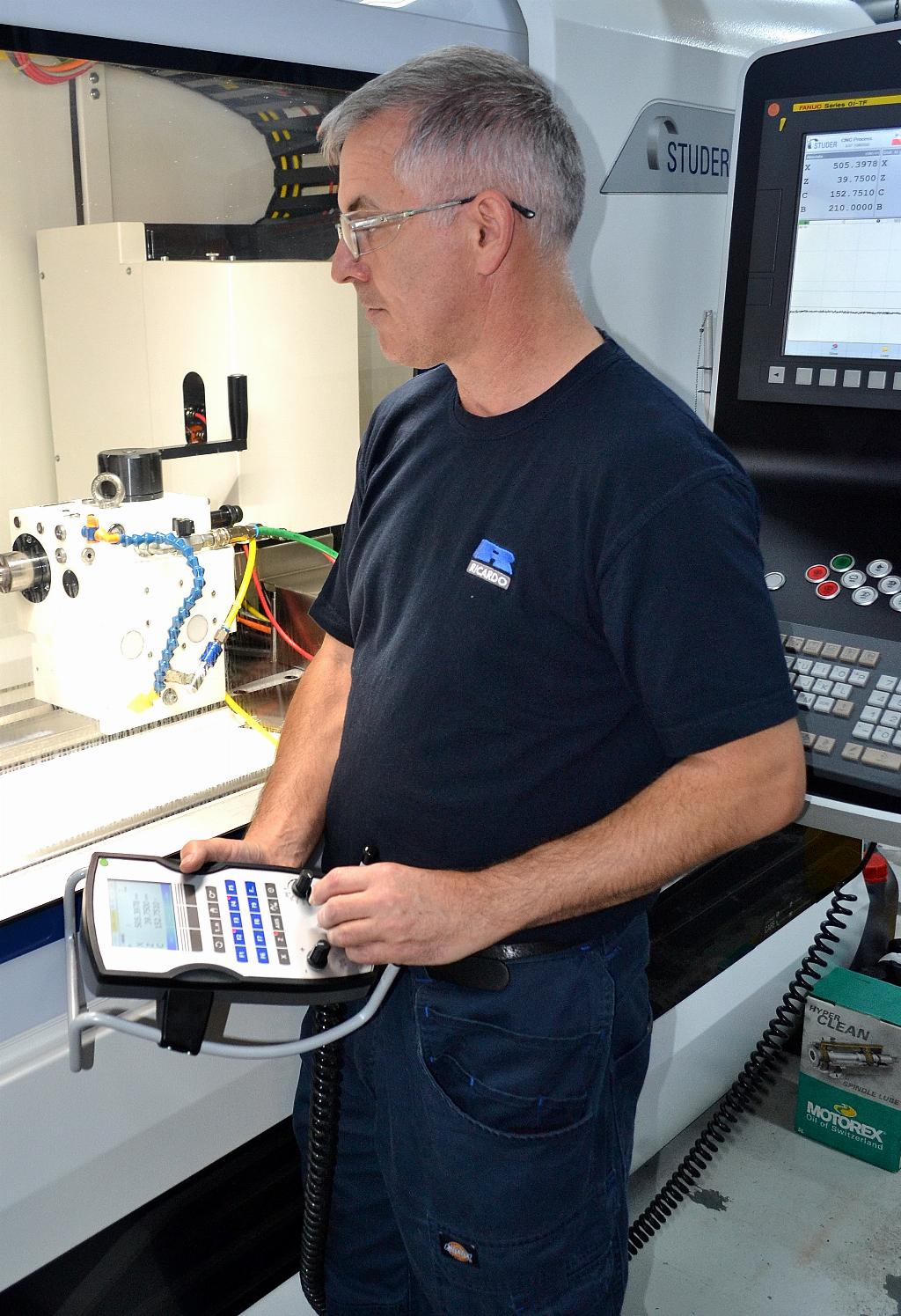Ricardo ensures the transmission of quality with new Studer grinder

A recently installed Studer S33, CNC universal cylindrical grinding machine is helping staff at Leamington Spa-based Ricardo Driveline and Transmission Systems to maintain their high-precision grinding standards.
Ricardo is a global strategic engineering and environmental consultancy specialising in the transport, energy and scarce resources sectors. Within the transport industry, Ricardo’s work extends across a range of markets, including the passenger car, commercial vehicle, rail, defence and motorsport sectors.
The company offers a number of first-class engineering capabilities enabling it to design and deliver high-quality prototypes and to undertake the low-volume manufacturing of complex products and assemblies, including engines, transmissions, electric motors and generators, battery packs and fuel cell systems.

Ricardo’s world-class facility has been responsible for a wide range of products on a global basis, from cost-optimised manual transmissions for developing markets to advanced high performance systems such as the automated manual transmission of the Aston Martin Valkyrie.
Given the importance of high-precision grinding to its manufacturing activities, the Leamington Spa facility operates four high-specification Studer CNC universal cylindrical grinding machines, including a recently installed S33 model which is now being used for the high-precision grinding of development and prototype components and relatively small production runs.
Although Ricardo’s staff had been impressed with the performance and reliability of the company’s existing Studer grinders, before the latest Studer acquisition the purchase of other grinding machines were considered.
Ricardo Driveline and Transmission Systems, production team lead, Victor Smith explains: “As it was possible that other machine tool manufacturers could have made technical improvements to their products, before we made the decision to go with Studer we compared the features, specification and capabilities – and price – of several other high-end grinding machines with the S33.
“The S33 proved to be the right choice for our needs,” he recalls. “Also, considering its impressive specification, we were surprised that it was only marginally more expensive than its less capable competitors. Further factors that influenced our decision were, the consistent high-quality of the components that we grind on our existing three Studer machines and their outstanding reliability. Also, over many years we have enjoyed excellent aftersales support from Studer and the company’s UK agent Micronz.
“To ensure that our operators quickly became familiar with the S33’s operation, we sent them to Studer’s HQ in Switzerland for in-depth training which, even though our staff were already experienced in the use of Studer machines and familiar with the company’s software, was really beneficial to realise the S33’s full potential.”

Much of Ricardo’s work involves demanding technical specifications related to parameters such as surface finish, roundness and dimensional tolerances. The new S33 takes all this in its stride as Mr Smith reveals.
“Even though our department has a large throughput of grinding work, we grind small numbers of development and prototype parts and undertake relatively limited production runs, therefore we need to make quite a lot of job changeovers in each working day,” he says. “The S33 allows us to make rapid changeovers from one job to another – which means we’re able to work efficiently by minimising grinding downtimes and maintaining our productivity levels.”
The Studer S33 is optimised for the individual and batch production of medium-sized workpieces. Studer supply the S33 with optional distance between centres of 400mm /650mm/1,000mm/1,600mm and a centre height of 175mm. The S33 is able to machine workpieces with a maximum weight of 150kg.
Granitan S103 is used for the machine base which exhibits excellent thermal and damping properties, ensuring consistent dimensional accuracy, high quality surface finishes and extended grinding wheel service life. Changing over from grinding between centres to live spindle grinding is a simple process, whilst the machine’s new wheelhead with two motor spindles enables the grinding of complex workpiece geometries in a single clamping.
The S33 is available with two optional wheelheads: a Turret wheelhead, that can be specified with one of 13 possible configurations, for example with two external and one internal grinding spindle, or one external and two internal spindles.
The wheelhead is positioned by an automatic swivel with 1° Hirth serration. The machine also has an external wheelhead with a grinding wheel on the right with degree separations of 0°/15°/30°. An optional C-axis is located on the S33 workhead for thread grinding, whilst a double T-slot is integrated into the workpiece table to accommodate dressing devices. To aid external and internal grinding on the turret wheelhead, the S33’s motor spindle includes a frequency converter.
Trouble-free programming is achieved with the use of Studer’s feature rich, yet easy to use software – StuderPictogramming whilst reduced set-up and resetting times are delivered via Studer Quick-Set. For customers wishing to create grinding and dressing programs, PC StuderWIN programming software is offered as an option. The Studer S33 can also be retrofitted with further software modules.
Micronz www.micronz.co.uk
Studer www.studer.com














